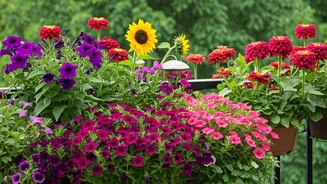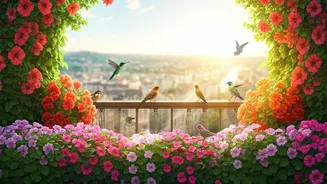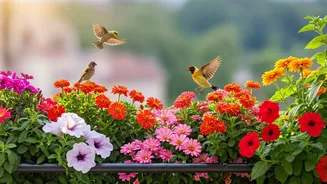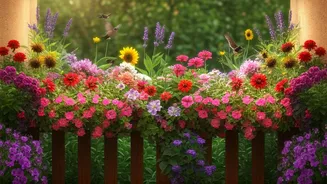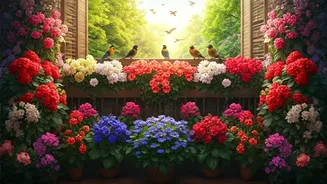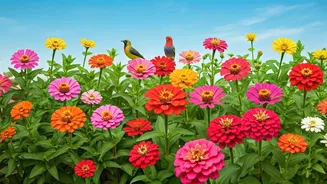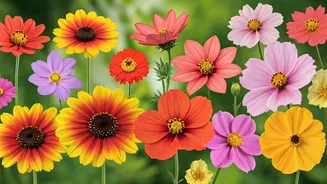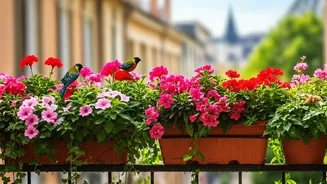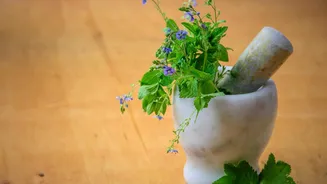Bird-Friendly Balcony Garden
Balcony gardens provide a tranquil escape, and strategically chosen flowers can draw in delightful birds. The correct blooms act as food sources, offer
shelter, and enhance the overall aesthetic appeal of the space. Creating a bird-friendly balcony is a rewarding endeavor that connects you with nature and supports local wildlife. It’s an easy and fulfilling way to improve well-being and increase biodiversity within your living space. Consider the exposure to sunlight, space constraints, and your ability to care for different plants when designing your balcony garden, as these elements will ensure the success of the plants and the birds that you want to attract.
Petunias: Colorful Attraction
Petunias, with their vibrant colors and trumpet-shaped blossoms, are a fantastic choice for attracting hummingbirds. These flowers bloom profusely throughout the growing season and come in a variety of colors, making them both visually appealing and a source of nectar. Hummingbirds are known to love the deep reds and purples, so choosing these colors can be especially effective. When planting petunias, ensure they receive ample sunlight—ideally at least six hours of direct sun—and well-draining soil. Regular watering and deadheading spent blooms will encourage continuous flowering, ensuring your balcony is always a buzz of activity.
Marigolds: Sunny Charm
Marigolds are cheerful, easy-to-grow annuals that provide bright pops of yellow and orange. They are excellent choices for attracting a variety of birds, including finches and sparrows, who are drawn to their seeds. Marigolds not only add a splash of color to your balcony but also help deter unwanted pests. Marigolds grow best in full sun and well-drained soil. They require minimal maintenance; regular watering and occasional deadheading of spent flowers will keep them looking their best. These flowers are relatively resilient and can tolerate various conditions, making them suitable for beginner gardeners.
Zinnias: Bold Blooms
Zinnias offer a spectrum of colors and are known for attracting butterflies as well as birds. Their bright, daisy-like flowers are a beacon for pollinators and seed-eating birds. Different species of birds will be drawn to them throughout their growing season. They also offer a generous supply of seeds. Zinnias flourish in full sun and require well-draining soil. They are relatively low-maintenance, requiring regular watering and deadheading to encourage more blooms and seed production. Planting zinnias is a simple way to create a lively and colorful habitat for birds.
Sunflowers: Towering Hosts
Dwarf sunflowers are an excellent choice for a balcony garden. They provide a striking visual element and a bountiful food source for birds. The seeds attract various finches, sparrows, and other seed-eating birds. Plant these beauties in full sun and rich, well-draining soil. While dwarf varieties stay compact, they still require adequate space. After the flowers fade, leave the seed heads intact to provide food for birds through the winter, or harvest the seeds yourself to supply bird feeders. These sunflowers add height and visual interest to a balcony garden.
Nasturtiums: Edible Delights
Nasturtiums are unique flowers known for their edible leaves and blossoms. They are also great for attracting hummingbirds and other small birds. The vibrant, trumpet-shaped flowers come in various colors and provide a nectar source, while the seeds offer a food source. Nasturtiums are easy to grow and thrive in full sun. They are relatively low-maintenance, requiring only moderate watering and well-drained soil. Their trailing habit makes them ideal for hanging baskets or containers, adding both beauty and functionality to your balcony space.
Lantana: Butterfly Magnet
Lantana is a perennial shrub known for its clusters of brightly colored flowers that attract butterflies and hummingbirds. These flowers come in shades of yellow, orange, red, and purple and bloom profusely throughout the growing season. Lantana thrives in full sun and well-drained soil and is drought-tolerant once established, making it a low-maintenance option for balconies. Regular pruning and deadheading will encourage more blooms and keep the plant compact. Its ability to attract butterflies also enhances the biodiversity of your garden.
Lavender: Aromatic Attraction
Lavender not only adds a soothing fragrance to your balcony but also attracts bees and butterflies, which in turn attract birds. The purple flowers are visually appealing and provide a nectar source. Lavender thrives in full sun and well-drained soil, preferring drier conditions. Regular pruning and harvesting the flowers will promote new growth and encourage more blooms. The aromatic properties of lavender can also contribute to a more calming environment, enhancing the overall appeal of your balcony.
Salvia: Colorful Spikes
Salvia, with its vibrant spikes of flowers, is a favorite among hummingbirds and attracts other pollinators. The tubular-shaped flowers provide easy access to nectar for these birds. Salvia thrives in full sun and well-drained soil. Regular watering and deadheading spent flowers will encourage continuous blooming throughout the season. The range of colors, from bright reds and purples to blues and whites, adds visual interest to any balcony garden, making it a valuable addition for attracting and supporting birdlife.
Fuchsias: Elegant Bells
Fuchsias, with their elegant, bell-shaped flowers, are another excellent choice for attracting hummingbirds. Their vibrant colors and unique shapes make them visually appealing. Fuchsias do best in partial shade, making them suitable for balconies with less direct sunlight. They require regular watering and well-draining soil. Protecting them from harsh weather conditions is also important. The delicate blooms of fuchsias add a touch of elegance to any balcony garden while creating a welcoming environment for hummingbirds.
